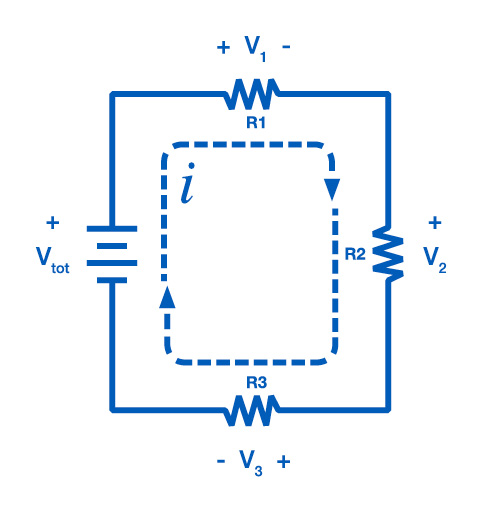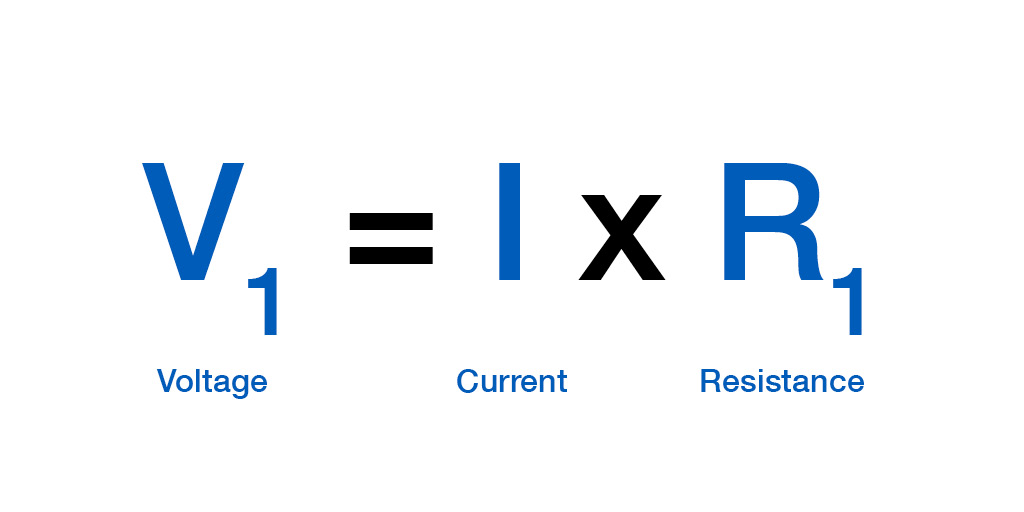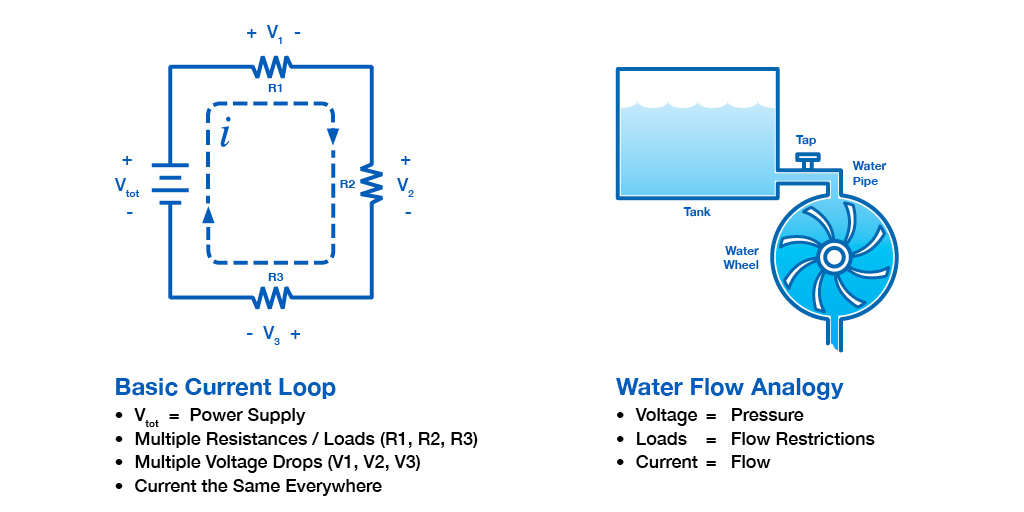Ultrasonic Magnetic Vortex Flow Meter Manufacturer, Sure We Are, Sure To Be Better | ✉ overseas@suremeter.com
Ultrasonic Magnetic Vortex Flow Meter Manufacturer, Sure We Are, Sure To Be Better | ✉ overseas@suremeter.com
In order to understand what a 4-20 mA direct current (DC) loop is and how it works, we will need to know a little bit of math. Don't worry; we won't be delving into any advanced electrical engineering formulas. In fact, the formula we need is relatively simple: V = I x R. This is Ohm's Law. What this is saying is that the voltage (V) is equal to the current (I) multiplied by the resistance (R) ("I" stands for Intensité de Courant, French for Current Intensity). This is the fundamental equation in electrical engineering.

Consider the simple DC circuit above, consisting of a power supply and three loads. A current loop requires voltage to drive the current. This is provided by the power supply, with the voltage of the supply labeled as Vtot. Current then flows through the loop, passing through each load. The voltage drop at each load can be calculated from Ohm's Law. The voltage drop V1 across R1 is:

Every element in the loop either provides voltage or has a voltage drop. However, the current, "I" is the same everywhere in the loop. This is the critical principle of the 4-20 mA loop. Current is the same in all places throughout the loop. It may be difficult to understand why the current remains constant, so consider your home's water system as a comparison. There is a certain amount of pressure in the water pipes pushing the water towards your house.

Voltage, in a similar fashion, acts as a pressure, pushing current through the circuit. When a tap inside your home is turned on, there is a subsequent flow of water. The flow of water is analogous to the flow of electrons, or current. The ability of the pressure to push the water through the pipes is limited by bends and restrictions in the pipe. These restrictions limit the amount of flow in the pipe, similar to how a resistor limits the current. The flow through the pipe, and likewise the current through the wire, remains constant throughout the system, even though pressure, and likewise voltage, will drop at various points. This is why using current as a means of conveying process information is so reliable.
Part of the challenge of working in an industry which requires process control is determining if the pros outweigh the cons. Making the right decision can save both time and money.
The 4-20 mA current loop is the dominant standard in many industries.
It is the simplest option to connect and configure.
It uses less wiring and connections than other signals, greatly reducing initial setup costs.
Better for traveling long distances, as current does not degrade over long connections like voltage.
It is less sensitive to background electrical noise.
Since 4 mA is equal to 0% output, it is incredibly simple to detect a fault in the system.
Current loops can only transmit one particular process signal.
Multiple loops must be created in situations where there are numerous process variables that require transmission. Running so much wire could lead to problems with ground loops if independent loops are not properly isolated.
These isolation requirements become exponentially more complicated as the number of loops increases.

Copyright © 2025 Tianjin Sure Instrument Co., Ltd. | All Rights Reserved 津ICP备08002549号-2
Hello, please leave your name and email here before chat online so that we won't miss your message and contact you smoothly.